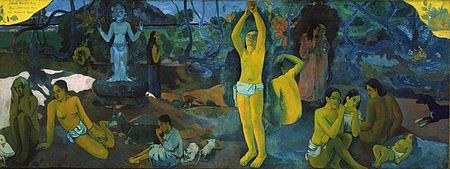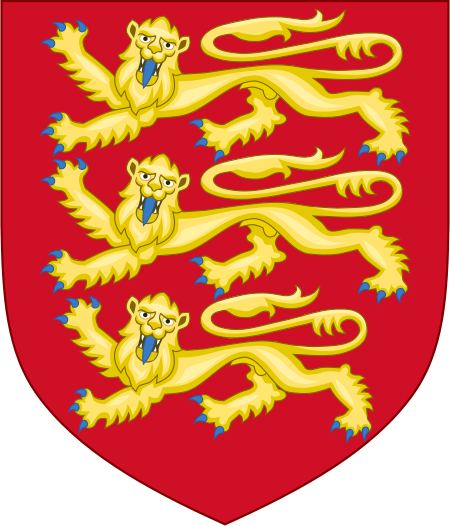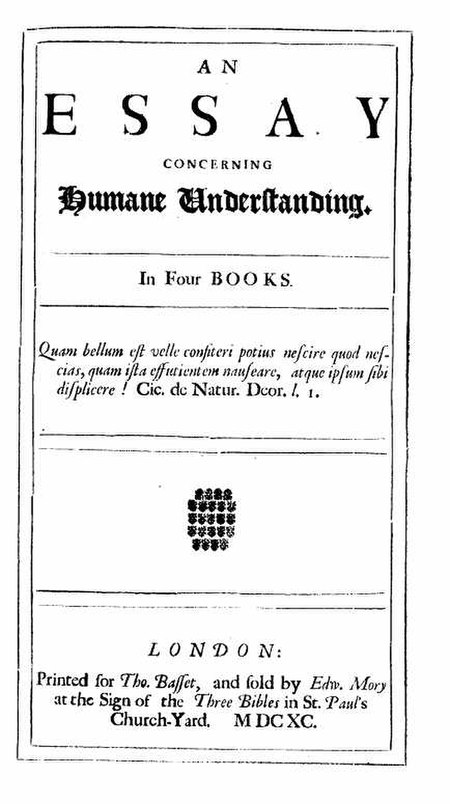Course (education)
|
Read other articles:

Serretella Airfield Part of Twelfth Air ForceSerretella AirfieldLocation of Serretella Airfield, ItalyCoordinates40°36′30.41″N 014°58′57.94″E / 40.6084472°N 14.9827611°E / 40.6084472; 14.9827611 (Approximate)TypeMilitary airfieldSite informationControlled byUnited States Army Air ForcesSite historyBuilt1943In use1943 Serretella Airfield is an abandoned World War II military airfield in southeast Italy, which is located in the vicinity of Battipaglia …

Type of moustache Not to be confused with Fu Manchu moustache or Handlebar moustache. Horseshoe moustache style A horseshoe moustache, also known as a biker moustache, is a full moustache with vertical extensions grown on the corners of the lips and down the sides of the mouth to the jawline, resembling an upside-down U or a horseshoe. The whiskers grown along the sides of the mouth in the horseshoe are sometimes referred to as pipes. The horseshoe is not to be confused with the Fu Manchu, which…

1955 single by Gilbert Bécaud and Everly Brothers This article needs additional citations for verification. Please help improve this article by adding citations to reliable sources. Unsourced material may be challenged and removed.Find sources: Let It Be Me The Everly Brothers song – news · newspapers · books · scholar · JSTOR (July 2016) (Learn how and when to remove this message) Je t'appartiensSingle by Gilbert BécaudReleased1955GenrePopSongwrit…

Division 1 1935-1936 Competizione Division 1 Sport Calcio Edizione 4ª Organizzatore FFF Luogo Francia Partecipanti 16 Formula Girone unico Sito web lfp.fr Risultati Vincitore RC France(1º titolo) Retrocessioni ValenciennesOlympique Alès Statistiche Miglior marcatore Roger Courtois (34) Incontri disputati 240 Gol segnati 913 (3,8 per incontro) Cronologia della competizione 1934-1935 1936-1937 Manuale La Division 1 1935-1936 è stata la 4ª edizione della massima serie del campi…

「俄亥俄」重定向至此。关于其他用法,请见「俄亥俄 (消歧义)」。 俄亥俄州 美國联邦州State of Ohio 州旗州徽綽號:七葉果之州地图中高亮部分为俄亥俄州坐标:38°27'N-41°58'N, 80°32'W-84°49'W国家 美國加入聯邦1803年3月1日,在1953年8月7日追溯頒定(第17个加入联邦)首府哥倫布(及最大城市)政府 • 州长(英语:List of Governors of {{{Name}}}]]) • …

Hobarrow Bay and Long Ebb. Behind: Brandy Bay and Gad Cliff Hobarrow Bay is a small secluded southwest-facing bay, with an oil shale and shingle beach to the southeast of Brandy Bay and to the southwest of Kimmeridge on the south coast of the Isle of Purbeck, in Dorset, England. Location Hobarrow Bay is located just over 1 kilometre (0.62 mi) southeast of the ghost village of Tyneham, about 6 kilometres (3.7 mi) south of Wareham and about 15 kilometres (9.3 mi) west of Swanage. It…

本條目存在以下問題,請協助改善本條目或在討論頁針對議題發表看法。 此條目需要編修,以確保文法、用詞、语气、格式、標點等使用恰当。 (2013年8月6日)請按照校對指引,幫助编辑這個條目。(幫助、討論) 此條目剧情、虛構用語或人物介紹过长过细,需清理无关故事主轴的细节、用語和角色介紹。 (2020年10月6日)劇情、用語和人物介紹都只是用於了解故事主軸,輔助讀�…

Частина серії проФілософіяLeft to right: Plato, Kant, Nietzsche, Buddha, Confucius, AverroesПлатонКантНіцшеБуддаКонфуційАверроес Філософи Епістемологи Естетики Етики Логіки Метафізики Соціально-політичні філософи Традиції Аналітична Арістотелівська Африканська Близькосхідна іранська Буддійсь…

National Olympic Committee Maldives Olympic CommitteeCountry/Region MaldivesCodeMDVCreated1985Recognized1985ContinentalAssociationOCAPresidentMr Mohamed Shaweed[1]Secretary GeneralMr Ahmed Marzooq[1]Websitewww.olympic.mv Maldives Olympic Committee (IOC code: MDV) is the National Olympic Committee representing Maldives. It is also the body responsible for the Maldives' representation at the Commonwealth Games.[2] The Maldives was taking part in the 2012 Summer Olympic…

de Lévézou de Vezins Armes Blasonnement D'azur, au lion couronné d'or, allumé, armé et lampassé de gueules Lignées Famille de LévézouFamille de Luzençon (puis de Lévézou) Branches de Vezins (ainée)de Charry Période XIVe au XXIe siècle Pays ou province d’origine Rouergue Demeures Château de VezinsChâteau de Malicorne-sur-Sarthe Charges Député de la noblesse, sous-préfet, maire, conseiller général, gentilhomme ordinaire de la chambre du roi, gentilhomme ordinai…

Battle of the Third Crusade For other sieges, see Siege of Acre (disambiguation). Siege of AcrePart of the Third CrusadeManuscript depiction of Acre surrendering to Richard I of England and Philip II of France (late 14th century)Date28 August 1189 – 12 July 1191LocationAcre32°55′39″N 35°04′54″E / 32.9275°N 35.0817°E / 32.9275; 35.0817Result Crusader victoryBelligerents Angevin Empire Kingdom of France Kingdom of Jerusalem Knights TemplarOrder Of St Lazarus K…

U.S. federal statutes on government organization This article is part of a series on theUnited States Code United States Code Title 1 - General Provisions Title 2 - The Congress Title 3 - The President Title 4 - Flag and Seal, Seat of Government, and the States Title 5 - Government Organization and Employees Title 6 - Domestic Security Title 7 - Agriculture Title 8 - Aliens and Nationality Title 9 - Arbitration Title 10 - Armed Forces Title 11 - Bankruptcy Title 12 - Banks and Banking Title 13 -…

Court having jurisdiction in Christian religious matters Religious courts redirects here. For Jewish rabbinical courts, see Beth din. This article has multiple issues. Please help improve it or discuss these issues on the talk page. (Learn how and when to remove these template messages) This article needs additional citations for verification. Please help improve this article by adding citations to reliable sources. Unsourced material may be challenged and removed.Find sources: Ecclesiastic…

Philosophical work by John Locke Not to be confused with An Enquiry Concerning Human Understanding. An Essay Concerning Human Understanding Title page of the first editionAuthorJohn LockeLanguageEnglishSubjectEpistemologyPublication date1689(dated 1690)Publication placeEngland Part of a series onJohn Locke Social contract Limited government Tabula rasa State of nature Right to property Labor theory of property Lockean proviso Argument from consciousness Works(listed chronologically) Fundamental …

Active volcano in the Philippines Mount BanahawBanahaoMount Banahaw, seen from Victoria, LagunaHighest pointElevation2,170 m (7,120 ft)[1][2]Prominence1,919 m (6,296 ft)[1]ListingActive volcanoUltraCoordinates14°04′03″N 121°29′33″E / 14.06750°N 121.49250°E / 14.06750; 121.49250[1][3]GeographyMount BanahawShow map of LuzonMount BanahawShow map of Philippines CountryPhilippinesRegionCalabarzonProvi…

ميريل لينش (بالإنجليزية: Merrill Lynch, Pierce, Fenner, & Smith Inc.) ميريل لينش البلد الولايات المتحدة المقر الرئيسي نيويورك تاريخ التأسيس 6 يناير 1914 المؤسس تشارلز إي ميريل، وإدموند سي لينش المالك بنك أمريكا الوضع القانوني شركة عامة المالية إجمالي الإير…

Point Clear, Alabamatempat penetapan sensusNegaraAmerika SerikatNegara bagianAlabamacountyBaldwinLuas • Total5,7 sq mi (14,7 km2) • Luas daratan5,7 sq mi (14,7 km2) • Luas perairan0 sq mi (0 km2)Ketinggian10 ft (3 m)Populasi (2000) • Total1.876 • Kepadatan329,1/sq mi (127,6/km2)Zona waktuUTC-6 (Central (CST)) • Musim panas (DST)UTC-5 (CDT)Kode pos36564Kode area…

Questa voce o sezione sull'argomento farmaci è priva o carente di note e riferimenti bibliografici puntuali. Sebbene vi siano una bibliografia e/o dei collegamenti esterni, manca la contestualizzazione delle fonti con note a piè di pagina o altri riferimenti precisi che indichino puntualmente la provenienza delle informazioni. Puoi migliorare questa voce citando le fonti più precisamente. Le informazioni riportate non sono consigli medici e potrebbero non essere accurate. I contenuti han…

The interior of Coutances Cathedral, Normandy, France The larger medieval churches of France and England, the cathedrals and abbeys, have much in common architecturally, an east–west orientation, an external emphasis on the west front and its doors, long arcaded interiors, high vaulted roofs and windows filled with stained glass. The eastern end of the building contains the Sanctuary and the Altar. The part of the cathedral that shows the greatest diversity and the greatest change is the easte…

Auto race held at Bristol International Speedway in 1976 1976 Volunteer 400 Race details[1][2] Race 21 of 30 in the 1976 NASCAR Winston Cup Series season Layout of Bristol Motor SpeedwayDate August 29, 1976 (1976-August-29)Official name Volunteer 400Location Bristol International Speedway, Bristol, TennesseeCourse Permanent racing facility0.533 mi (0.857 km)Distance 400 laps, 166.5 mi (328.8 km)Weather Temperatures of 84.9 °F (29.4 °C); wind speeds of 1…